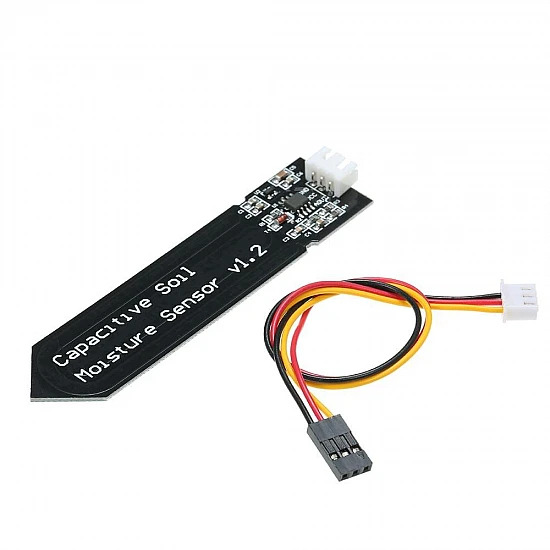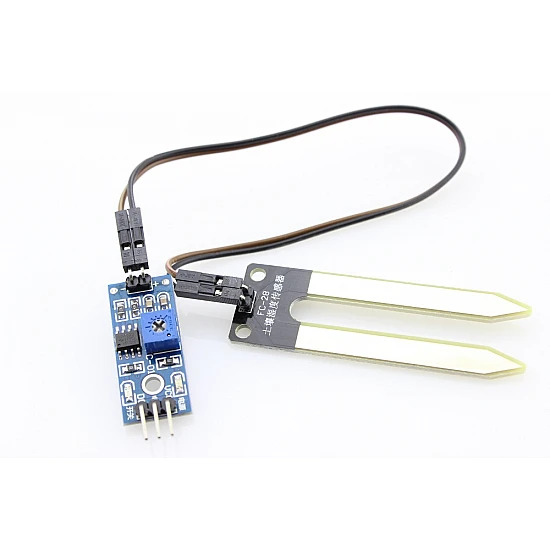
For gardeners and enthusiasts, soil moisture sensors are indispensable instruments that offer important information about the soil's moisture content. This article will discuss and contrast the widely used FC-28 Soil Moisture Sensor with the Capacitive Soil Moisture Sensor V2.0.
Capacitive Soil Moisture Sensor V2.0

Overview:
A contemporary and dependable sensor for determining soil moisture content is the Capacitive Soil Moisture Sensor V2.0. When compared to conventional resistive sensors, its capacitive sensing technology yields readings that are more precise and reliable.
Key Features:
- Capacitive Sensing: Utilizes the capacitance between the sensor's electrodes and the surrounding soil to determine moisture levels.
- Analog Output: Provides analog output proportional to soil moisture, allowing for precise readings.
- Wide Voltage Range: Operates over a broad voltage range, making it compatible with various microcontrollers and development boards.
- Low Power Consumption: Consumes minimal power, suitable for battery-powered projects.
- Easy to Use: Simple to connect and integrate into projects, making it an excellent choice for beginners.
How to Use:
- Connect the sensor to your microcontroller or development board.
- Insert the sensor into the soil.
- Read the analog output to determine soil moisture levels.
FC-28 Soil Moisture Sensor

Overview:
The FC-28 Soil Moisture Sensor is a widely used resistive sensor that measures soil moisture based on the electrical resistance between its two probes.
Key Features:
- Resistive Sensing: Measures soil moisture by assessing the resistance between its probes.
- Analog/Digital Output: Depending on the module, it may provide analog or digital output.
- Affordability: Typically more budget-friendly compared to capacitive sensors.
- Simple Design: Easy to use and suitable for basic soil moisture monitoring applications.
How to Use:
- Insert the sensor into the soil.
- Read the analog or digital output to gauge soil moisture levels.
Differences:
- Sensing Technology: The Capacitive Sensor uses capacitance, while the FC-28 relies on resistance for moisture measurements.
- Accuracy: Capacitive sensors generally provide more accurate and stable readings compared to resistive sensors.
- Cost: FC-28 sensors are often more budget-friendly, making them a popular choice for simple projects.
Conclusion:
The budget and particular needs of your project will determine which of the two soil moisture sensors—the FC-28 or the Capacitive Soil Moisture Sensor V2.0—you should use. While the FC-28 provides an affordable option for basic soil moisture monitoring, the Capacitive Sensor excels in applications where accuracy is essential.
Try out both sensors to determine their advantages and disadvantages, then select the one that best suits your electronics project or gardening needs.
Happy experimenting with soil moisture sensors!




Leave a Comment